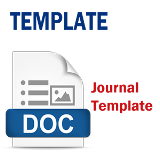FLOOD IDENTIFICATION BY UTILIZING REMOTE SENSING AND SPATIAL ANALYSIS TECHNIQUES IN PADANG CITY
Abstract
Natural disasters floods are the most common disasters found almost everywhere, floods can cause damage and can even take lives. The city of Padang is often hit by flood disasters which result in damage and loss for those affected. This research aims to 1) To find out the results of identifying flood-prone areas by utilizing remote sensing and spatial analysis techniques in Padang City; 2) To determine the level of flood vulnerability by utilizing remote sensing and spatial analysis techniques in Padang City. This research uses an overlay method which combines several parameters. Parameters for identifying areas that have the potential for flooding in this research include slope, rainfall, land use, elevation, soil type, and river buffer. Each of these parameters is given a different scoring value and weight, then an overlay analysis is carried out and a flood hazard map will be produced as a result of the combination of parameters used. After obtaining the results from the overlay analysis of all parameters, the map of potential flood areas will be divided into 3 vulnerability classes, namely low, medium and high vulnerability classes. The results of the research are that the low vulnerability class has an area of 33854.4 ha with a percentage of 49% of the total area of Padang City, the medium vulnerability class has an area of 26337.6 with a percentage of 38.2% of the total area, and the high vulnerability class has an area of 8823.3 ha with a percentage of 12.8% of the total area.







